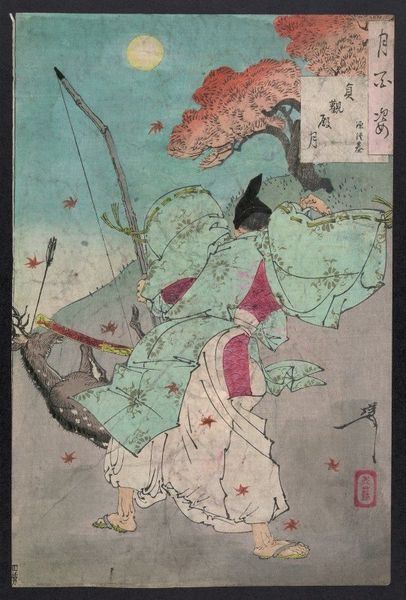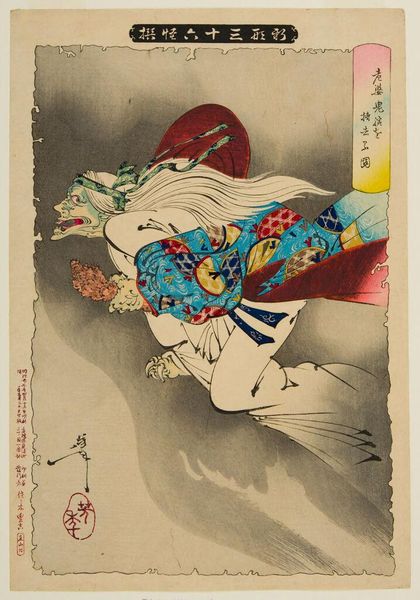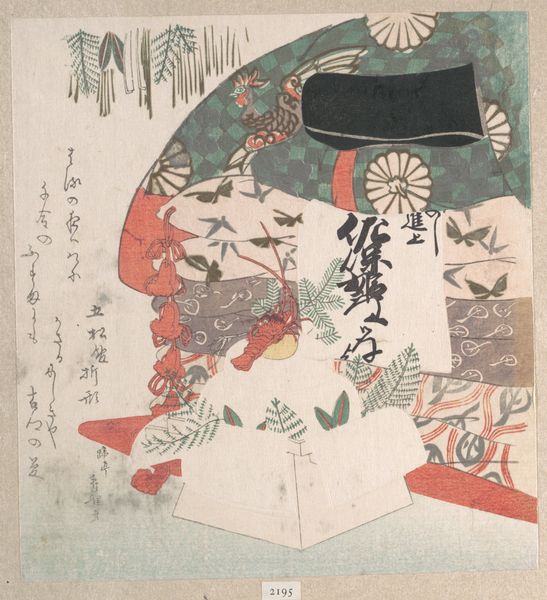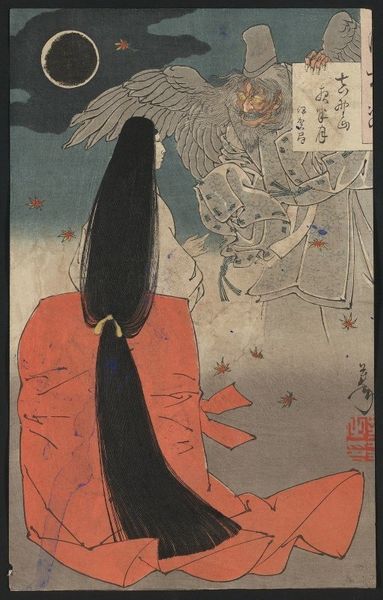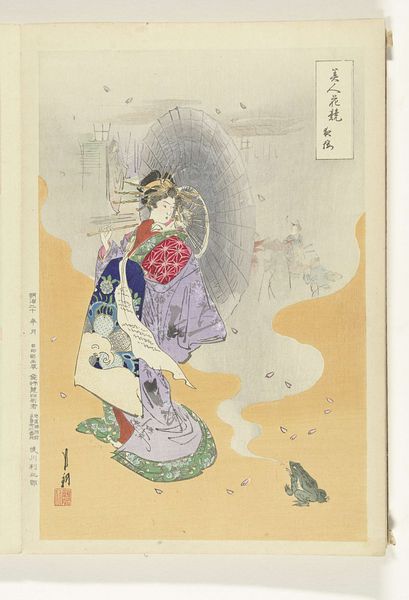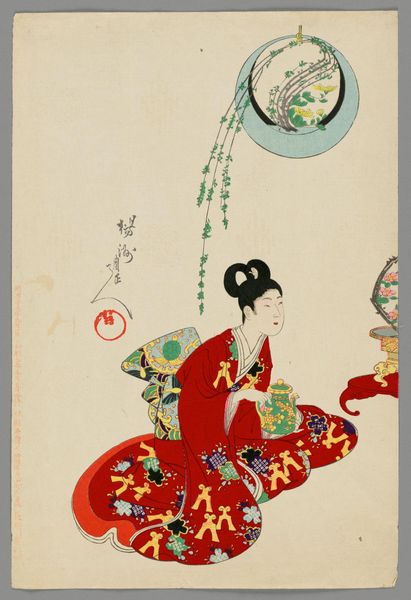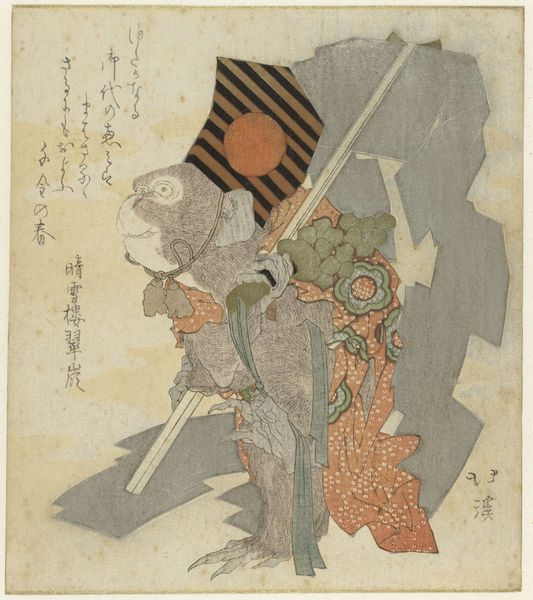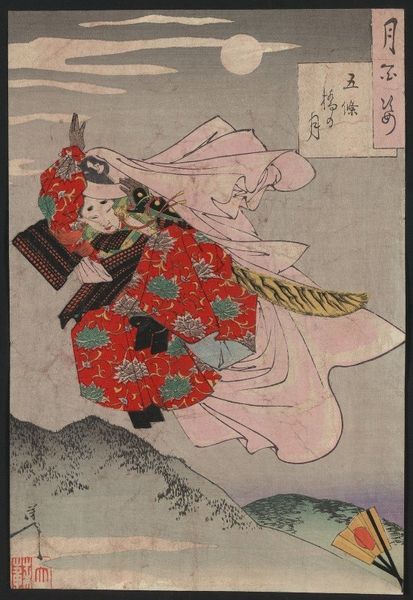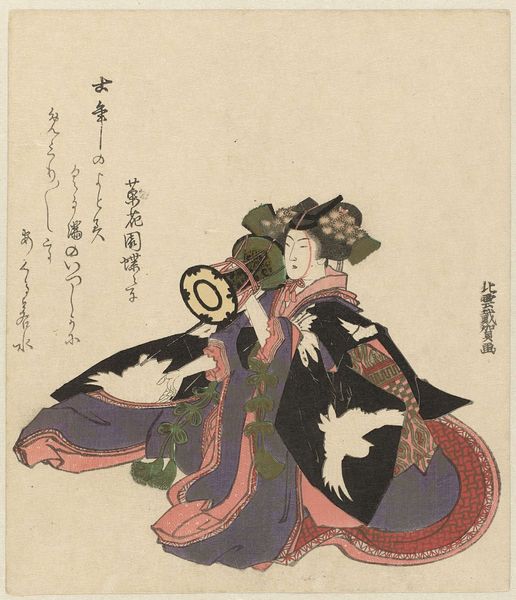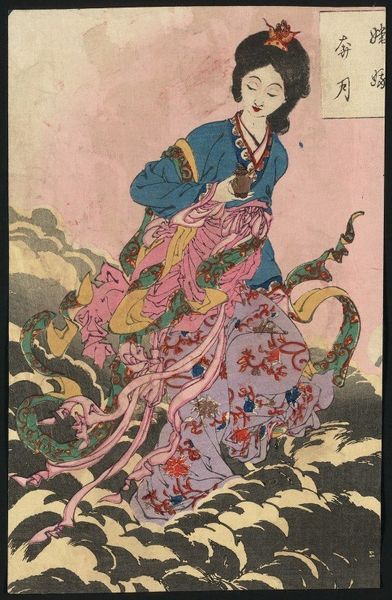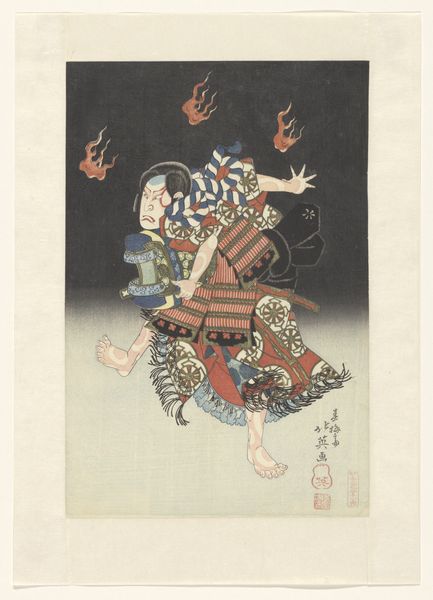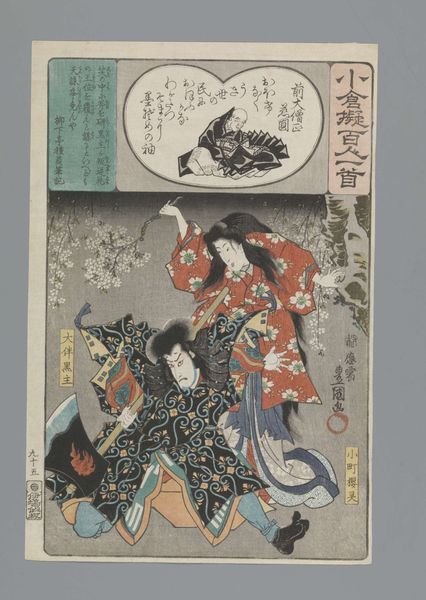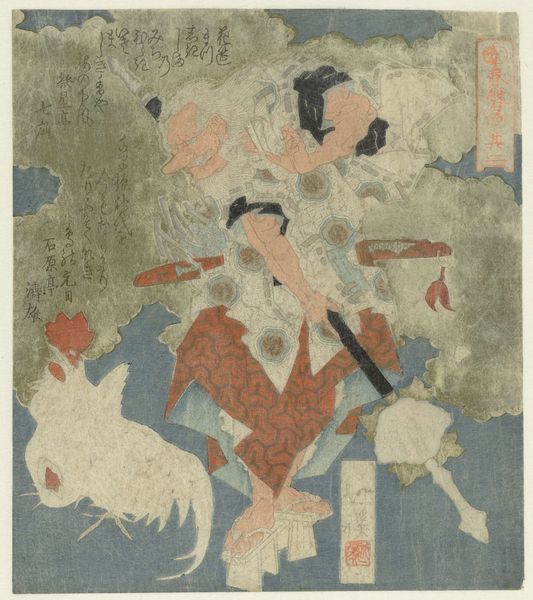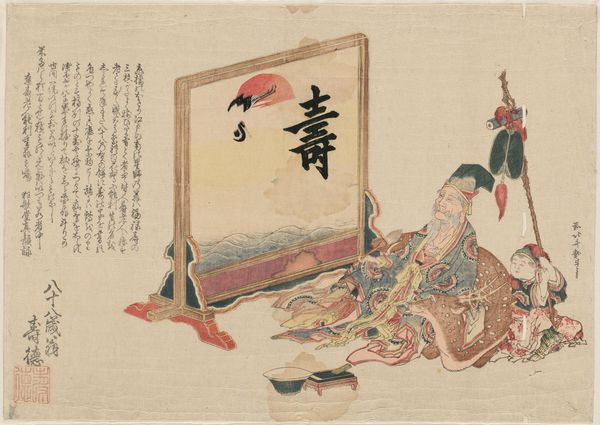
Copyright: Public Domain: Artvee
Curator: So here we have Tsukioka Yoshitoshi’s “Ibaraki,” a print from 1880 rendered with ink, offering us a glimpse into Japanese folklore. What strikes you first about it? Editor: The monster's striking. It’s powerful but also seems burdened by something, or trapped. What context would illuminate a deeper reading of this image? Curator: Well, Yoshitoshi often used the supernatural to comment on the political and social upheavals of his time. Consider the role of folklore in reflecting societal anxieties. How might a fearsome figure like Ibaraki function as a symbol in late 19th-century Japan, a period marked by rapid modernization and cultural clashes? Editor: I guess the fear of the unknown, the fading traditions perhaps? The demon’s ornate robe seems to clash with its monstrous form. Curator: Exactly! The demon is dressed in what appears to be courtier’s robes, but the disjunction and the gnarled form complicates any singular message. What social norms is the demon violating and what societal structures are producing such transgression? Perhaps Yoshitoshi is posing complex questions. Is this monster a cautionary tale, or does it represent a rebellion against societal constraints? What do you make of Ibaraki being female, in certain iterations of the fable? Editor: Thinking about that period of modernization, maybe the demon is about what happens when we shun part of ourselves or our past in pursuit of something new and ‘modern’? Curator: Precisely. Art, like folklore, becomes a site where those cultural anxieties and resistance are expressed and negotiated. I'd encourage to think about the construction of monstrosity to reinforce societal boundaries and power structures. Editor: So, looking at “Ibaraki”, it’s more than just a fantastical creature; it’s a reflection of a society grappling with its identity, its past, and its future. Thanks. I see a lot more now. Curator: Absolutely. Approaching art with a critical eye lets us consider perspectives and power structures and reveals new and rich ways of interpretation.
Comments
No comments
Be the first to comment and join the conversation on the ultimate creative platform.
